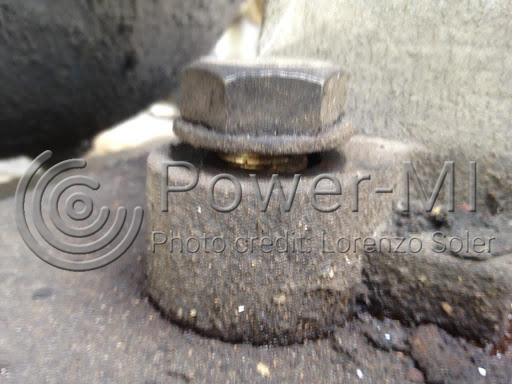A bolt is diagnosed as loose when it does not have the proper torque, has lost preload, when it is not threaded, or when it is partially or totally fractured. There are two types of bolt looseness: self-loosening and environmental loosening.

Causes
Generally speaking, self-loosening is when the bolts lose torque or preload due to continuous relative displacements between the mating surfaces that can lead to gradual rotation of the bolt or nut.
Environmental loosening is caused by a concrete slump, deformation, or plastic flow as well as corrosion.
Fully or partially fractured bolts are generally from fatigue or impact. Also, design problems and bad assembly are caused by bolts not threaded or poorly tightened.
Cases
Through visual inspections the most common cases of loose bolts that are diagnosed are:
- Machine benches: anchoring to foundation, motor or machine base, regulation bolts.
- Bases of transformers and power towers.
- Structures and fixings.
- Pipelines.
- Shaft coupling.
- Tank and container lids.
Diagnosis
Detection of loose bolts in visual inspections is by direct observation (of the bolt or nut loose, broken, or out of position), by torque measurement, or by compression indicators. There are also inspectors who detect loose bolts due to abnormal noise, high vibration, or fuzzy visualization of the bolt or thread.
Loose bolt detection sometimes involves viewing the bolt from different angles so the inspector must adopt non-ergonomic postures or use Optical aids.


 cloud_download
cloud_download